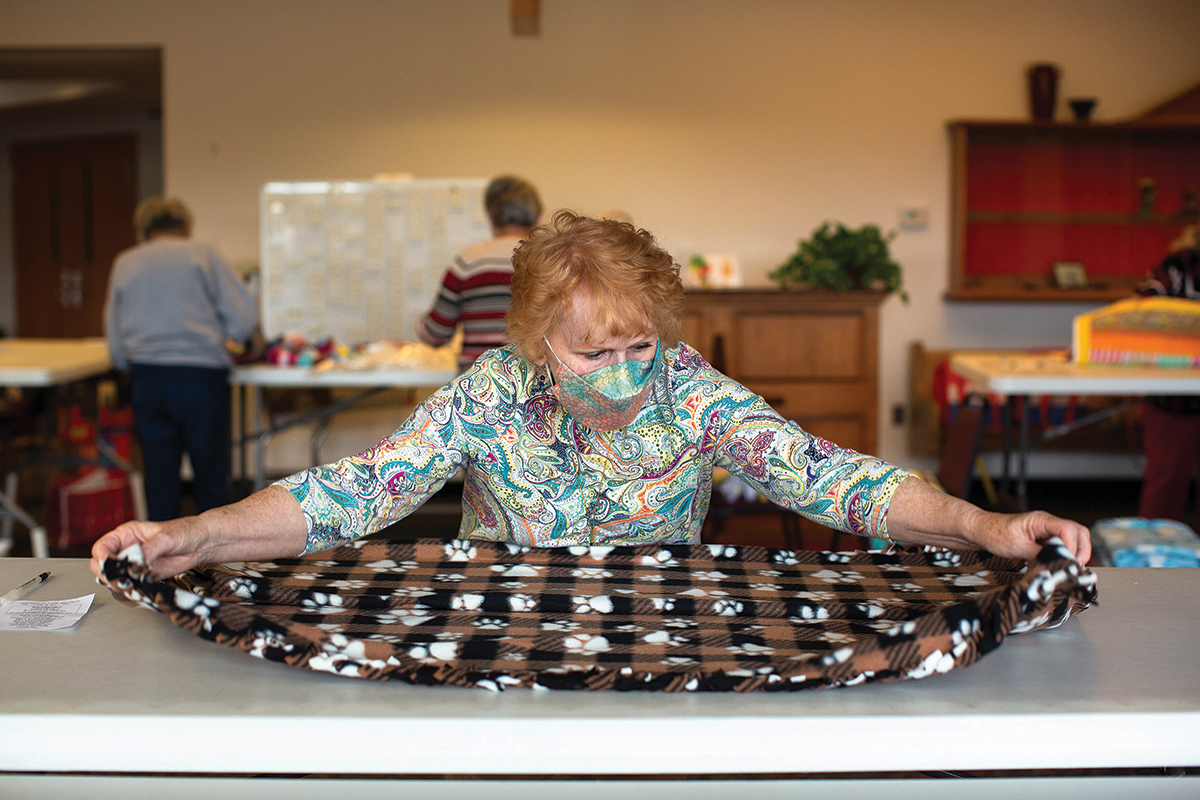
A hive is never truly asleep, even in the colder months. Devin Gentry inspects bee activity. He and wife Linsday Green spend up to 20 hours a week on their hives in addition to their full-time jobs.
Photo by Karin Strickland
Beekeeping is usually depicted as a summertime commitment, but the art of apiculture requires work in all seasons. After winter hibernation, beekeepers carefully maintain favorable environments as colonies mass produce in the spring. Honey is monitored throughout the summer and harvested in August, but the work does not stop in the fall months.
November in particular is not a respite from the duties of beekeepers, including Lindsay Green and Devin Gentry, owners of Bee. Honey + Hive. For them, this month means meticulous preparation and protection of their colonies.
The couple’s hives span several locations in eastern Transylvania County and along the French Broad River Valley, a rigorous project in addition to their full-time directorial jobs, Green with the kids’ educational nonprofit Muddy Sneakers and Gentry with the Cradle of Forestry.

Bees rely on the vibration of their bodies to stay alive over winter.
Photo by Karin Strickland
“Environmental-science education has been a field we’ve both found ourselves in for much of our careers,” Green says, referring to the driving force behind their hobby-turned-business of two years. “We’ve been thoughtful as to how to grow it, and how to do so sustainably.”
“On average, we are spending about 10 to 20 hours a week on our business in November and significantly more during the spring, summer, and fall,” Gentry says. However, preparing the hives for the winter months can be a difficult one.
In early November, the female workers rid male drones from the colony, since mating ceases until spring, while the larger, longer-living winter bees replacing their summer counterparts begin to hatch. Throughout the winter, the bees will rely on already stored honey and the vibration of their bodies in order to produce heat to keep themselves and the queen alive.

Photo by Karin Strickland
With harvesting now three months behind them, Green and Gentry must ensure that all 50 of their colonies are equipped for colder temperatures. “During the fall, we’re assessing what the hives have stored for the winter months and maybe adding frames of honey or pollen if needed, making sure they’ve got strong populations,” Green describes. Each hive must have a productive queen, and colonies are treated for Varroa mites.
Gentry stresses the timeliness factor. “Once winter really starts to set in, we try not to disturb our colonies unless we absolutely have to.”
Unfortunately for Green and Gentry, along with many other beekeepers in the area, honey production was critically low this year due to weeks of wet weather when key nectar sources were blooming. “You’re never guaranteed a honey harvest,” Green notes.
But there’s always next season. The hives here are a family effort. Gentry’s dad helps during honey-bottling time, and the couple’s six-year-old daughter Iris is official honey taste tester, among a variety of duties that grow in importance every year. “Iris has been peeking into beehives with us since she was two years old,” says Gentry.

Photo by Karin Strickland
For more information, including next seasons classes and apiary tours, visit beehoneyandhive.com.



